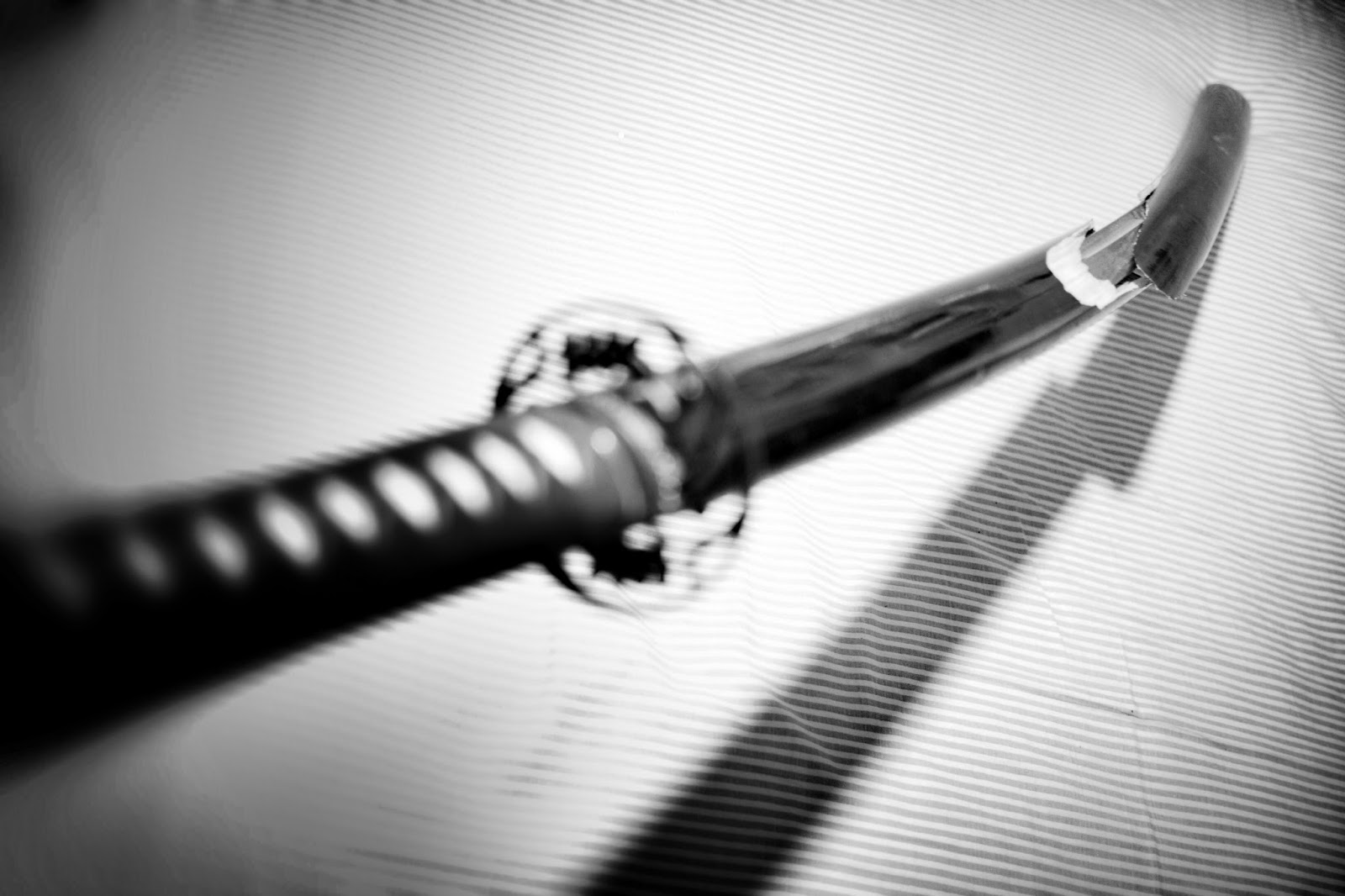From Bujinkan Santa Monica by Michael
 |
| Michael's Broken 鞘 Saya, photo by Lisa Peters |
Here is an excerpt from my training notes I send every week to subscribers. I thought more people should read about this, so >
subscribe here< or keep reading:
Tonight my class focus was 鯉口の切り方 Koiguchi no kirikata. This is "cutting the carp's mouth," or freeing your sword from the "mouth" of the saya. There are many great techniques to do this. But sadly, most sword schools obsess on only one or two.
Tonight I showed 8 methods. This opens the door for infinite secrets.
I used the kata 撥倒 Hatto to give us focus as we practice this iai. First the opponent cuts while my sword is still sheathed. Here I am at an immediate disadvantage. To begin to address this we need the fundamentals of iai.
The first two I shared were 外切り sotogiri and 内切り uchigiri. These are very common. You probably have already studied these. The first has the thumb on the tsuba as you push forward the break the seal. The second has the thumb push from behind the tsuba.
The main advantage of uchigiri is that it is more concealed.
Next we looked at 控切りhikaegiri. In this version you are holding your sword back. Protecting even your opponent from being cut. This done with both the index finger and the thumb. In the version I showed, just because you are protecting the opponent from being cut, doesn't mean you protect him from pain or being defeated. But his life is spared today.
My sword had other ideas though. It even split my saya in two trying to get out!
The next secret I showed was like holding onto the wing of a bird to hold it back from flight. In this method that I won't detail here, you hold the flight of the tip just long enough for target acquisition. Then you let it fly like an arrow.
Now I switched tactics and used the index finger both as a safety to hold the sword, but also to break the seal of the habaki. I learned this one straight from Hatsumi Sensei and I like the hidden factor.
Another one that is useful when your grip is not ready, is 鍔元ギリギリ tsubamoto girigiri. I showed this without even having the sword in my belt. You might just be standing there holding it when you are attacked. Or maybe you just grab it off the floor or table. Whatever the situation, just by squeezing the koiguchi, the flex of your hand against the tsuba releases the habaki.
Then I fought using my saya and my sword as they both slice through the kukan.
Next I did some unarmed taijutsu to expose some of the principles of the kata 撥倒 Hatto that we were using as our foundation. If you can't get it without a weapon, with a sword your errors are magnified.
Returning to the sword, I went into some advanced methods of drawing that I learned from Hatsumi Sensei. They are things I doubt you will see from most sword teachers. They are unorthodox and even potentially hazardous to the user! For this reason I won't share them in print.
I did make a video of tonight's instruction, so if you want to be first to know when it comes out, sign up to my mailing list >
subscribe here<.
In one class Hatsumi Sensei said,
"This is a secret of ninja drawing. One part of koppojutsu is having the knack for drawing. Anyone can grab a sword handle and pull it. But you have to bring it out like it's a mist."
This advice will transform your sword draw. But it is also a transcendent insight into our ninja weapon strategy.
That one idea was worth going to class that night. Or, if you are already getting my training notes, doesn't that one tip make you glad you subscribed?

…



